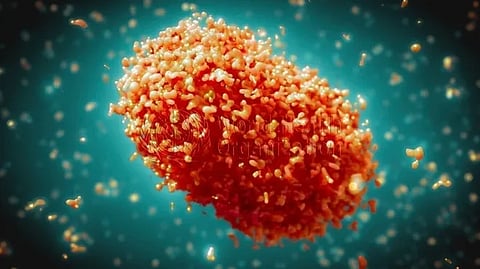

The World Health Organization (WHO) has declared the ‘Monkeypox’ outbreak a public health emergency of international concern. Monkeypox or Mpox is a disease native to the African continent, but it has recently spread throughout not just throughout Africa but also Europe, resulting in scientists and the WHO issuing warnings and trying to identify the factors behind the outbreak.
Multi-country outbreak of Mpox
Countries Affected: The outbreak is mainly concentrated in the Democratic Republic of the Congo (DRC), with a growing number of cases in neighbouring countries in Africa, including Burundi, Kenya, Rwanda, and Uganda. Recently one case found in Pakistan also.
Death toll: As of the latest report, there have been over 15,600 cases and 537 deaths.
Virus Strain: The outbreak is caused by a new virus strain, clade 1b, which appears to be spreading mainly through sexual networks ¹.
Global Risk: The WHO has declared the outbreak a public health emergency of international concern, citing the potential for further spread across Africa and possibly outside the continent.
Symptoms: Common symptoms of mpox include a skin rash or pus-filled lesions, fever, headaches, muscle aches, back pain, low energy, and swollen lymph nodes ².
Transmission: The infection can be passed on through contact with someone who has the infection or with infected animals ².
Which virus is it caused by Mpox?
Monkeypox is caused by the Orthopoxvirus, which is related to the smallpox family of disorders native to the African continent. However, this virus has recently spread throughout Africa and to some countries in Europe.
Monkeypox is capable of human-to-human transmission through contact with secretions containing the virus, which can originate from the respiratory system, wounds, or contaminated objects, while infection via prolonged exposure to aerosol particles is also possible.
The smallpox vaccine is approximately 85% effective in helping to prevent a Monkeypox infection.
Monkeypox was first discovered in 1958 during studies of infectious diseases in monkeys, while the first human case was reported in 1970 in the Republic of the Congo. After that, cases were mostly confined to countries in central and western Africa, with most cases reported in the Republic of the Congo and Nigeria.
Likelihood of infection and high-risk groups
From studies into the transmission of the disease, it has been found that those most at risk are people who live in areas in close proximity to an outbreak or those who have travelled to African countries. People who have had close contact with infected animals or patients, medical staff, researchers studying the condition, those living with an infected patient, people engaging in activities with an infected patient, and those living nearby forested areas are all more likely to become infected. However, the rates at which the virus spreads through other means are still very low.
Symptoms of Monkeypox…
Monkeypox has an incubation period of between 6–13 days, after which symptoms start to present. The symptoms can be split into 2 main phases, as follows:
1. Phase 1: Days 0–5
Fever
Headaches
Aches and pains
Back pain
Fatigue
Swollen lymph nodes
2. Phase 2: Days 1–3 following the onset of fever
A rash tends to form on the face and arms rather than on the patient’s abdomen. However, a rash can also occur on hands, feet, mouth, and in and around the eyes. It begins as a red rash and hives, but these soon develop into clear pustules that turn yellow after time, and finally dry up and fall away. In severe cases, these pustules can become quite large and remove areas of skin when they peel off, although all symptoms generally go away without treatment after 2-4 weeks.
Serious complications associated with the disorder are repeat infections, pneumonia, hematological infections, nerve system infections, and loss of sight caused by eye infections.
Disease severity and mortality rates
Despite symptoms being similar to smallpox, the symptoms of monkeypox are actually less dangerous, with most patients recovering without treatment within 2–4 weeks of contracting the virus. Mortality rates for this disease are approximately 0–11%, with most deaths occurring in children. Moreover, recent figures show that the mortality rate has dropped to between 3–6%, with children, adolescents, and those with immune system deficiencies shown to be most at risk because most of the adult population have received a smallpox vaccine, which can play a part in protecting them against monkeypox.
Preventing infections
The smallpox vaccine can play a part in reducing the likelihood of contracting monkeypox by approximately 85%, but there are also vaccines being developed specifically to provide protection against monkeypox. Aside from these, there are certain habits that can help people to reduce their risk of infection, as follows:
Regularly wash hands with soap or alcohol-based gel
Avoid contact with infected patients
Avoid consumption of raw meat
Avoid contact with wildlife and the secretions of animals suspected of carrying the disease, such as monkeys and rodents
